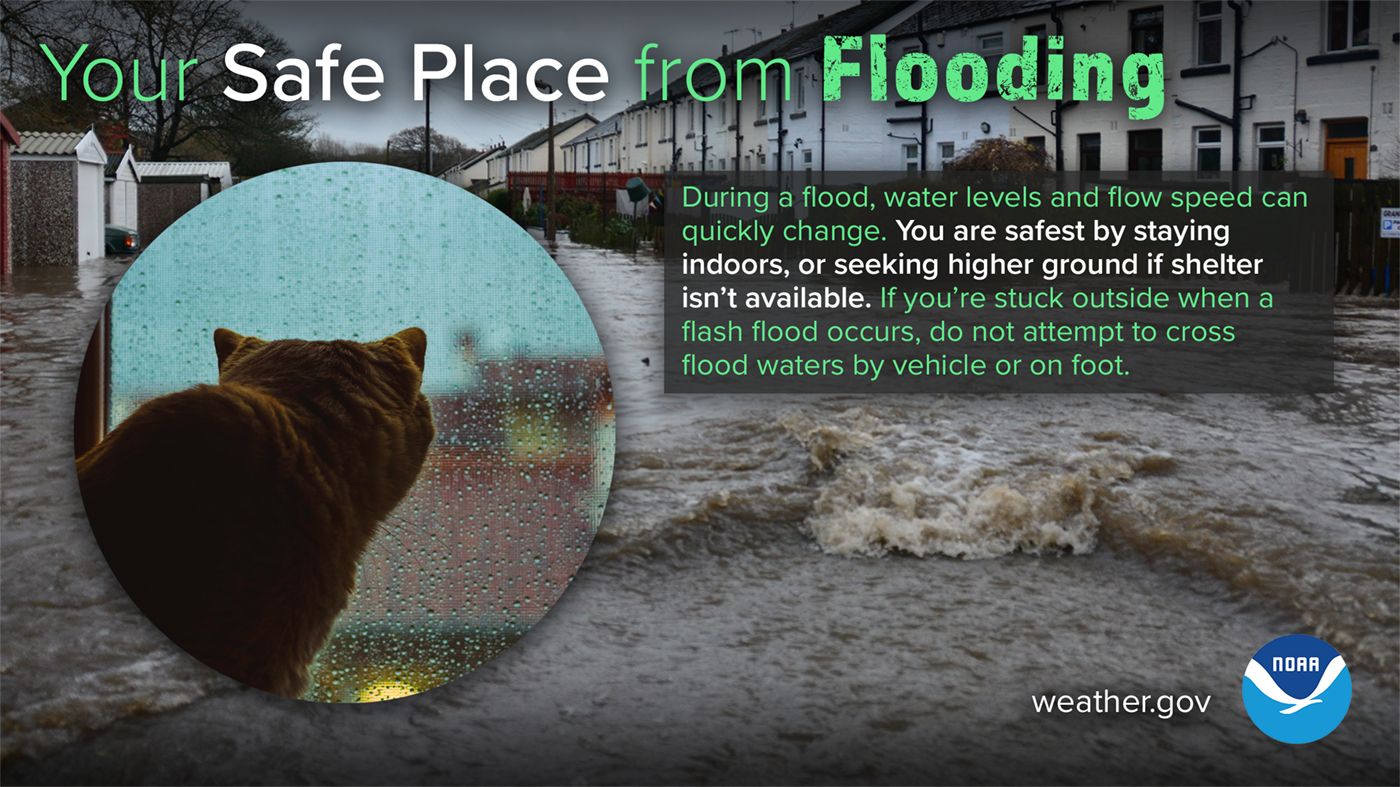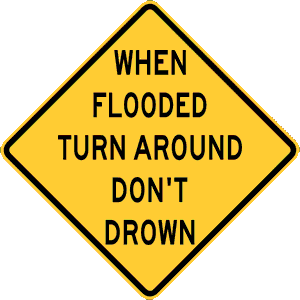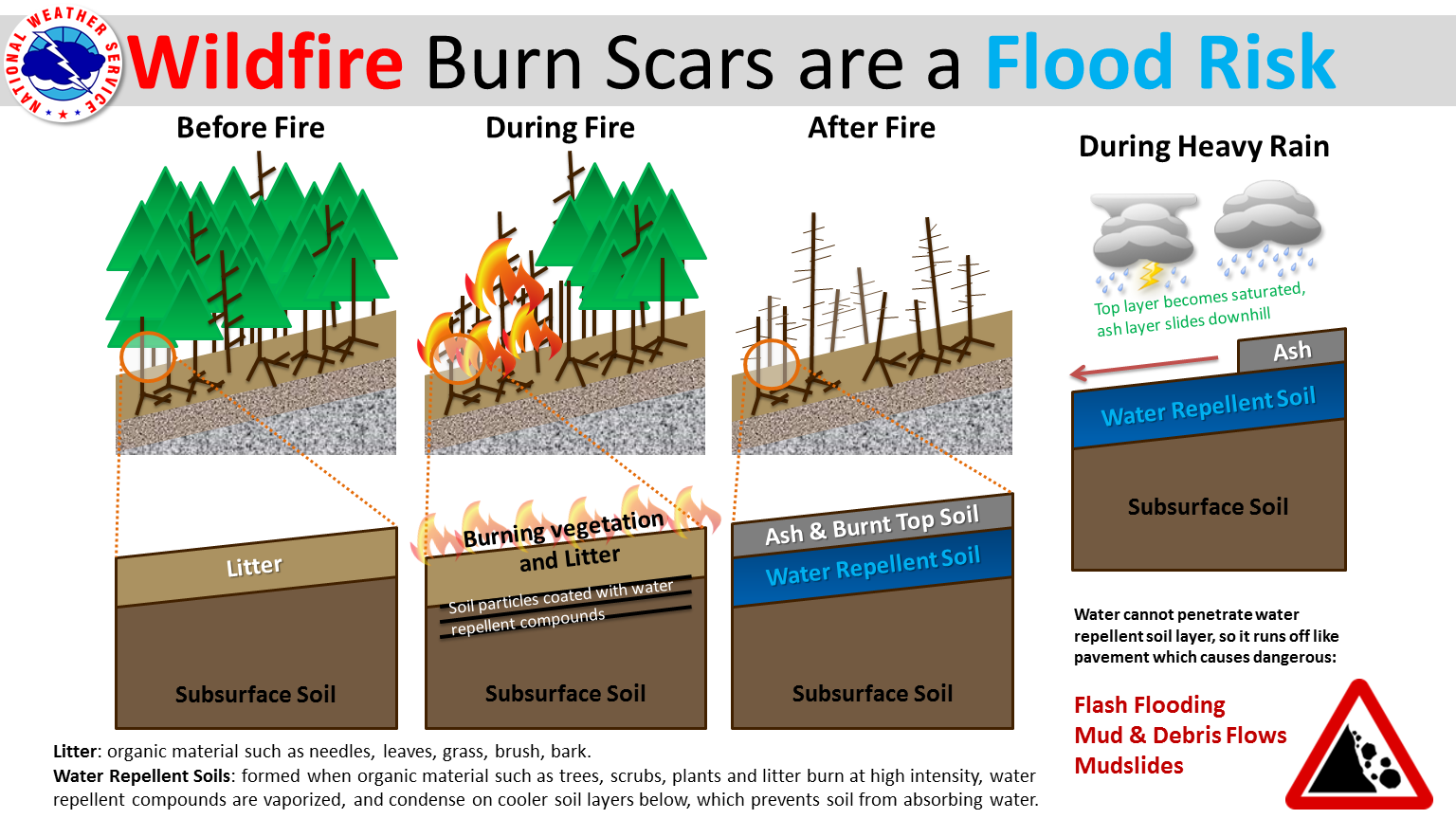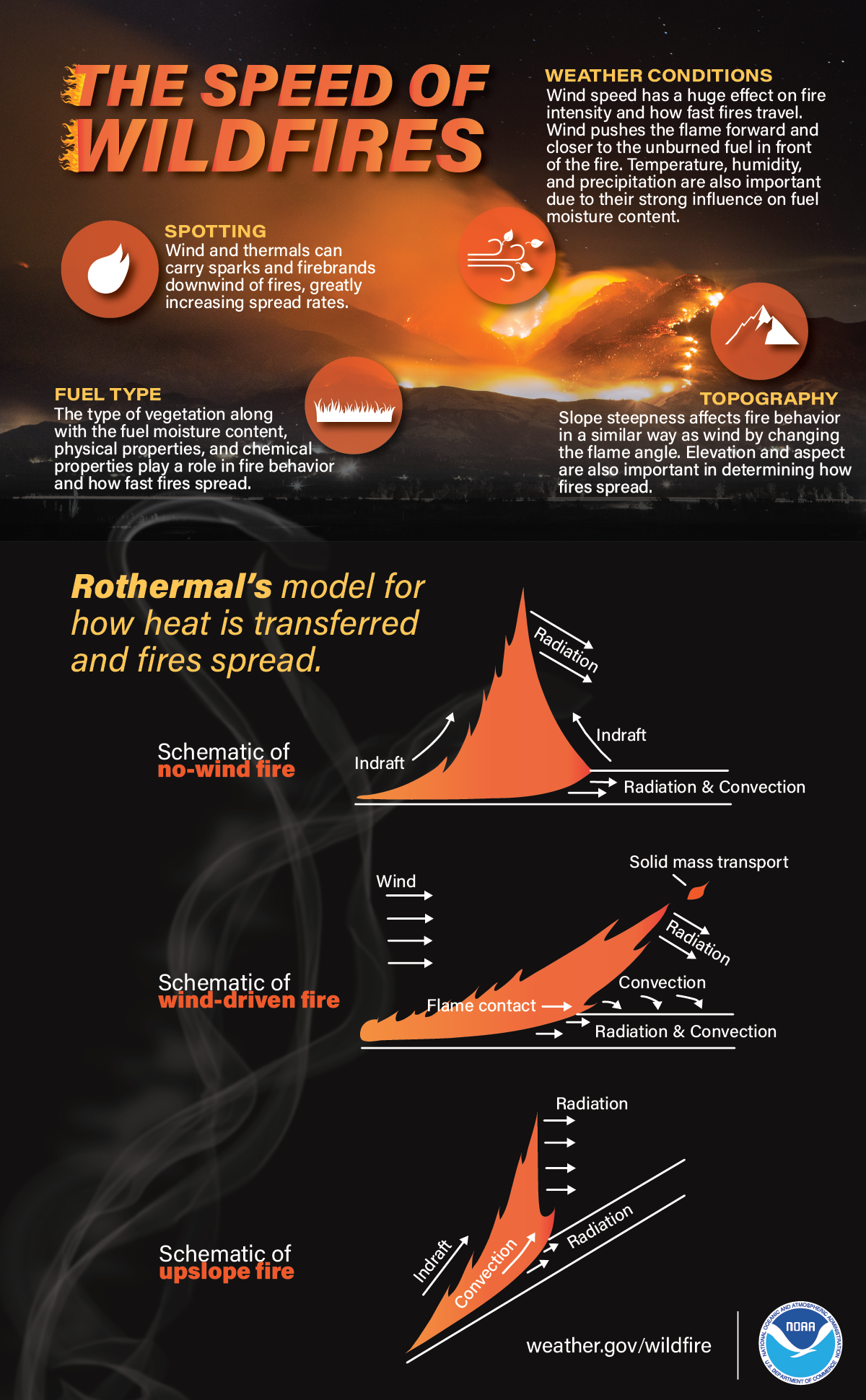Flood & Fire Awareness Week - Introduction Flood and wildfire season is approaching. Use the information provided during the coming days to help understand your risks from floods and wildfire and make your plans to be prepared. The National Weather Service wants everyone in the United States to be part of a Weather-Ready nation. Colorado has more than its fair share of floods, flash floods, and wildfires. You should be weather alert and weather-ready, knowing how to stay safe when floods and wildfires affect your area. This week, March 7st through 13th, is Colorado Flood Safety and Wildfire Awareness Week. Now is the time to learn about flood and wildfire risks in Colorado, and to develop your plans to improve you outcome. Floodprone areas have been identified in over 250 cities and towns and in all 64 counties in Colorado. Over 250 thousand people live in floodplains in Colorado. There are estimated to be 65 thousand homes and 15 thousand commercial, industrial, and business structures in identified floodplains. There are likely many more structures located within unmapped flood hazard areas. The value of the property, structures, and contents located in the identified floodplains is estimated to be around 15 billion dollars. Floods and flash floods have killed over 400 people in Colorado since the turn of the 20th century. The historic weather pattern of September 2013 reminds us all that floods are a major concern across the Centennial state. Floods have caused billions of dollars of damage in Colorado. On average, 2500 wildfires occur across Colorado each year. Since 2012, 8 people have been killed when wildfires occurred in the wildland-urban interface. The National Weather Service forecast offices which serve Colorado will issue a series of public information statements during this Colorado Flood Safety and Wildfire Awareness Week...covering the following topics… Sunday...Introduction to the week Flood Watches & Warnings Flooding can be a major problem in Colorado, as we experienced in September 2013. Heavy rain fell over a large area of the foothills south to the Pikes Peak Region, resulting in flash flooding. Much of the water that fell across northeast Colorado eventually ended up in the South Platte River, with major river flooding from Greeley to the state line. River flooding can result from heavy rain during the summer and from rapid snowmelt or thunderstorm rain combining with runoff from melting snow. Flash flooding refers to a dangerous sudden rise in water in an urban area, in a canyon, or along a creek or wash over a normally dry land area. Flash floods results from heavy rainfall, sudden breaks in river ice jams, and dam or levee failures. Flash floods can occur within a few minutes or hours, and can move at surprisingly high speeds, striking with little warning. Flash floods are quite destructive because of the force of the moving water, and the debris that accumulates in flood waters, such as trees and boulders, which can destroy roadways, bridges and buildings. Another complication in Colorado is the serious flooding that can result when heavy rain falls on recently burned areas. Anyone living downstream from a recently burned area should be aware of the changed conditions, which result in much faster, turbulent, debris and ash clogged waters from the burned area. You can find more information about floods after fire at this website: https://www.weather.gov/bou/floodafterfire. The National Weather Service will discuss flood and flash flood potential in daily hazardous weather outlooks and in the graphical weather story on National Weather Service websites. On days with a high threat for flooding, you may hear of a Flash Flood or Flood Watch, which means that flash flooding or flooding is possible within the watch area. A Flood Warning means that flooding is imminent or has been reported along a river. When a Flash Flood Warning is issued for your area, act quickly. If advised to evacuate, do so immediately. Go to higher ground or climb to safety before access is cut off by flood waters. Go Up, Not Out. Nearly half of all flash flood fatalities are vehicle related. Do not enter a flooded roadway, instead Turn Around...Don't Drown. In rapidly rising waters, backing up away from water would be safer. One to two feet of water will carry away most vehicles, and you also cannot tell if the road is damaged beneath the water. More information on flooding hazards can be found on the National Weather Service Flood Safety page at: River Flooding Today's topic during this Colorado Flood Safety and Wildfire Awareness Week is flooding which develops in the time frame of longer than 6 hours to several days. Floods in Colorado can result from snow melt, ice jams, a combination of snow melt and heavy rain, or just heavy rain. National Weather Service forecast offices in Colorado closely collaborate with regional River Forecast Centers that monitor the Colorado River, South Platte River, Arkansas River, and Rio Grande to come to a consensus on the likelihood of flooding along rivers and large creeks. The National Weather Service will discuss flood potential in hydrologic outlooks, daily hazardous weather outlooks, and in graphical weather stories on National Weather Service forecast office websites. Hydrologic statements may be issued for high flows that are within the banks of a river or large creek. When flooding is possible on a river or large creek, a Flood Watch will be issued, meaning flooding is possible within the designated watch area. When flooding is likely or occurring on a river or large creek, a Flood Warning will be issued, meaning flooding is expected or has been reported at designated river forecast points. Flood Advisories may be issued for minor flooding on rivers and creeks. An Areal Flood Warning may also be issued for flooding on a river or large creek in areas away from the designated river forecast points. You can easily monitor potential flooding along rivers in Colorado and large creeks using the Advanced Hydrologic Prediction Service monitoring system. Information on this monitoring system can be obtained from this web site: https://water.weather.gov/ahps2/ This monitoring system can be accessed on Colorado National Weather Service forecast office websites by clicking Rivers and Lakes. At each river and large creek gauge you can easily look at current and forecast water levels, flood categories, historic crests, and flood impacts. Probabilities of exceedance of certain water levels by week or over the long term are also available. In general, there will be some time to prepare for river and large creek flooding, and emergency management in your area has plans in place to address flooding issues. Know these plans and how you should act accordingly when Flood Watches and Flood Warnings are in effect. For more information on flood safety go to: https://www.weather.gov/safety/flood The topic for tomorrow is life-threatening flooding which occurs very quickly, flash floods. Flash Flooding Flash floods are no strangers to Colorado. Since the year 1900, nearly 300 people have been killed in flash floods across the Centennial state. In terms of lives lost, the worst flash flood occurred on July 31, 1976 in the Big Thompson Canyon between Estes Park and Loveland. A nearly stationary storm produced around 12 inches of rain in 4 hours, claiming 144 lives. Three other notable flash floods in Colorado were: A flash flood is defined as a rapid rise in water levels, generally occurring in less than 6 hours, along large creeks, normally dry washes, arroyos, or over normally dry land areas, and can occur with little advanced notice. Flash floods frequently result from high rainfall rates, and infrequently result from dam failures, levee failures, or sudden breaks in river ice jams. Flash floods can be very destructive, due to the force of the moving water, and the accompanying debris. This tremendous force can easily damage or destroy roadways, bridges, and buildings. In recent years, Colorado has seen major flooding and damage when heavy rains have occurred on wildfire burn scar areas. If you are in or near a burn scar area, you need to plan ahead. Be aware of general flash flood plans and procedures that have been developed and implemented by your local emergency management officials. You should know your flash flood risks, and make your plans to save your life and those around you. You can find more information about floods after fire at this website: https://www.weather.gov/bou/floodafterfire. The National Weather Service forecast offices will discuss flash flood potential in daily hazardous weather outlooks, and in graphical weather stories on National Weather Service forecast office websites. During days when flash flooding is possible a Flash Flood Watch will be issued. During days when flash flooding is likely or occurring, a Flash Flood Warning will be issued. When a Flash Flood Warning is issued for your area, you need to act quickly if you are in a drainage area or in other low spots. Know your escape routes to higher ground and act as quickly as possible. It may be just a short walk or climb to that higher ground. Many flash flood deaths occur in vehicles. Do not drive through a flooded roadway. The water may be much deeper than you think, because the roadway may be damaged or washed away. One to two feet of water will carry away most vehicles. Instead, Turn around, Don't drown. For more information on flood safety go to: Fire Forecasts, Watches and Warnings Wildfire in Colorado...where do you get your information? Today's topic during this Colorado Flood and Wildfire Awareness Week is wildfire forecasts, watches and warnings. Wildfires can happen in Colorado throughout the year. Winter and Spring see the greatest threats on the plains, where dried grasses and other fine fuels can burn on warm, dry, windy days. In summer and fall forest fires are added to the mix, when larger fuels and timber dry and become available to burn. Colorado experienced a devastating fire season in 2020. These fires were due to a mixture of dry conditions, combined with gusty, warm winds and, sometimes, careless fire prevention efforts. There were instances when residents had to be evacuated as a large wildfire moved toward larger communities. Would you know what to do to protect yourself and your loved ones in this situation? In addition, if you live in an area that is susceptible to wildfires, how can you prepare yourself and your home? To assist in your preparation for fire, the National Weather Service provides a variety of fire weather forecast products. At least twice a day in Colorado, fire weather planning forecasts are made from each National Weather Service forecast office serving the state. A Fire Weather Watch may be issued, if in the next 12 to 48 hours, the forecast includes gusty winds of 25 mph or greater, relative humidity of less than 15 percent for at least three hours, dry lightning, or a combination of weather and fuel conditions that may make large wildfires possible. A Red Flag Warning will be issued if these same critical fire conditions are forecast within the next 24 hours. Both Fire Weather Watches and Red Flag Warnings are issued in coordination with land management agencies. The fire weather spot program supports land management agencies for both prescribed burns and for wildfires. A fire weather spot forecast is a detailed forecast for a prescribed burn or an individual wildfire. For national type 2 or type 1 fires the National Weather Service will send an IMET (incident meteorologist) to a fire team to provide on-site weather support and detailed fire forecasts. If you live in the wildland-urban interface there are a number of actions you can take to reduce your personal fire threat, including reducing vegetation near your home and putting a fire resistant roof on your home. NWS Denver/Boulder maintains a comprehensive fire weather web page with local information at: https://www.weather.gov/bou/fire. More information is available from your National Weather Service at: https://www.weather.gov/safety/wildfire or from the Department of Homeland Security at: When a wildfire occurs, there will likely be years of increased flood threat on the burn scar. A healthy forest can handle an inch to inch and a half of rain with no flood risk. Once the litter and vegetation is removed by wildfire, as little as a half inch of rain in a short period of time can cause serious and possibly life threatening flooding. Colorado Flood Safety and Wildfire Awareness Week continues through this Saturday. Wildfire Safety & Mitigation During this Colorado Flood Safety and Wildfire Awareness Week we have discussed floods, flash floods, and how to stay safe when flooding threatens. We also told you that areas burned by wildfires are highly susceptible to flash floods within a few years after the wildfire. Today we will provide you with information about wildfire safety and mitigation that could save your life and minimize destruction to your personal property. Colorado experienced several extreme wildfires in 2020. Most notable were the Pine Gulch and Grizzly Creek fires early in the season, only to be outdone by East Troublesome and Cameron Peak fires. All wildfires need fuel to burn, typically in the form of dry vegetation, as often occurs in forests, grasslands, and cured wheat fields. Tragically, some wildfires also kill people and destroy homes, vehicles, and other personal property. If you live near or within a forest, grassland, or wheat field, there are some actions you can take to minimize your vulnerability to wildfires. If you are a homeowner, the first defense against wildfires is to create and maintain a defensible space around your home. Defensible space is the area around a home or other structure where fuels and vegetation are treated, cleared or reduced to slow the spread of wildfire. Creating wildfire-defensible zones also reduces the chance of a structure fire spreading to neighboring homes or the surrounding forest. Defensible space also provides room for firefighters to do their jobs when fighting a wildfire. More information on how to make a defensible space around your home can be found on the Colorado State Forest Service website at https://csfs.colostate.edu/wildfire-mitigation/ During periods of extreme fire danger in forests and rangelands... If you become trapped or cut off by a wildfire, seek shelter in areas with little or no fuel, such as rock slide areas or lakes. For more information on wildfires and fire safety, please check out the following web addresses… Colorado Flood Safety and Wildfire Awareness Week continues through this Saturday. Flood and Fire Awareness Week in Review Colorado has more than its fair share of floods, flash floods, and wildfires. During the past week, in our effort to promote a Weather-Ready Nation, we have presented information to you on how to stay safe and minimize property damage during flood and wildfire threats. When a flash flood warning is issued for your area, you need to quickly move to higher ground out of drainages or other low spots. It may be just a short run or climb to that higher ground. Nearly half of all flash flood fatalities occur in vehicles. Do not drive through a flooded roadway. Instead, TURN AROUND, DON’T DROWN!!! The water may be much deeper than you think, because it may not be possible to see below the surface of flood waters when a roadway has been washed away. One to two feet of water will carry away most vehicles. Additional flood safety information can be found at https://www.weather.gov/safety/flood Areas burned by wildfires are highly susceptible to flash floods, especially within the first two or three years after the wildfire has occurred. Wildfires by themselves destroy much property and occasionally result in fatalities within Colorado. There are actions you can take to protect yourself and minimize the wildfire threat to your property. If you live near or within a forest or rangeland, you are encouraged to make a defensible space around your home and other structures. Information on how to make a defensible space around your home can be found on the Colorado State Forest Service website at http://csfs.colostate.edu/wildfire-mitigation/ River flooding from snowmelt or persistent rainfall can cause extensive damage to property. There are estimated to be 65 thousand homes and 15 thousand commercial, industrial, and business structures in identified floodplains within Colorado. FEMA has online maps that show if you are in a flood risk area. To access those maps, go to https://msc.fema.gov If you live in a flood prone area, buying flood insurance is the best thing you can do to protect your home, your business, your family and your financial security. To find an insurance agent and obtain other flood insurance information, go to FEMA’s National Flood Insurance Program web site at www.floodsmart.gov
Sunday - Introduction
Monday - Flood Watches & Warnings
Tuesday - River Flooding
Wednesday - Flash Flooding
Thursday - Fire Forecasts, Watches and Warnings
Friday - Wildfire Safety and Mitigation
Saturday - Week in Review
Monday...Flood watches and warnings
Tuesday...River floods
Wednesday...Flash floods
Thursday...Fire forecasts...watches...and warnings
Friday...Wildfire safety and mitigation
Saturday...Review of the week

A Flash Flood Warning means that flash flooding has been reported or is imminent.
https://www.weather.gov/safety/flood



https://www.ready.gov/wildfires.
...you should avoid being in areas where you might become trapped by a wildfire.
...you should avoid the use of matches, lighters, or anything else which could ignite a fire.
...make sure that hot parts of motorized equipment, such as mufflers, are not allowed to come in contact with dry grasses or other potentially flammable material.
https://www.weather.gov/safety/wildfire
https://www.weather.gov/fire/
https://www.ready.gov/wildfires
https://www.nifc.gov
As a reminder, there is generally a 30-day waiting period from the time a flood insurance policy is purchased to when it goes into effect.
Watches and Warnings are issued by the National Weather Service for a variety of weather hazards. Make sure you have a way to receive warnings. The National Weather Service web pages are a great way to view weather hazards at www.weather.gov. NOAA Weather Radios are another great way to monitor the weather and receive watches, warnings, and advisories and they can be found and most hardware or electronics stores.
Safety information, watches, warnings, forecasts, current conditions, radar, and much more information is available at your local National Weather Service web sites: